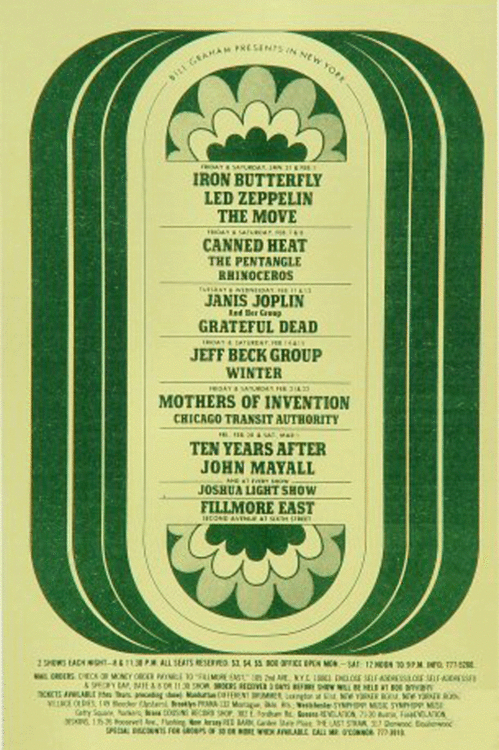
I am turning 50 years old this month, and the notion of hitting a half-century has provoked a lot of existential thinking on my part. I am feeling genuinely grateful for family, friends, and for being part of an amazing school that plays a transformational role in the lives of students and families. I am also feeling old.
Here’s a solid data point that I am, indeed, old: I was curious whether there was a major rock concert that occurred on the day of my birth, and I found that on Wednesday, February 12, 1969, the Grateful Dead opened for Janis Joplin at the Fillmore East in NYC. (I found this a bit serendipitous as I started my teaching career in Austin, Texas, at a school called St. Stephen’s. Austin is where Janis got her start, and The Dead have a classic song titled “St. Stephen,” which they played that night.) There is a line in the lyrics by Jerry Garcia and Robert Hunter that sticks out for me:
“Lady finger, dipped in moonlight, writing “What for?” across the morning sky
Sunlight splatters, dawn with answer, darkness shrugs and bids the day goodbye.”
As a student, teacher, and human, I have always contemplated the “why” or “what for.” Whether it was studying religious studies in college or engaging in my current intellectual curiosity about Ancestral Puebloan culture on the Colorado Plateau, I am genuinely interested in why humans make decisions and in the impact those decisions have across time. As I hit this milestone, I have done thinking about what drives me and what I want in my life for the next few decades. I anticipate continuing to explore the world—both physically and intellectually. However, I want my life to have purpose and meaning.
The span of a life
For most of history, humans, or Homo sapiens, have not really had the luxury of being able to think existentially. In Paleolithic times, total life expectancy was about 34 years. Finding food and security occupied a lot of mental and physical bandwidth. By the age of the Roman Empire, that number had not moved much. It is important to note that childhood mortality skews this data downwards, and there were well-known historical figures that lived long lives, like Socrates, who was 70 years old when he was executed. However, you get my point: life was hard before the Industrial Revolution. As Johan Wolfgang von Goethe wrote, “The human race is a monotonous affair. Most people spend the greatest part of their time working in order to live, and what little freedom remains so fills them with fear that they seek out any and every means to be rid of it.”
By the end of WWII, the average global lifespan rose to about 48. With that came more optimistic views of living in our world. Robert F. Kennedy observed in the 1960s, “The purpose of life is to contribute in some way to making things better.” However, even with all of our modern conveniences and technology, life is still hard. And in fact, history suggests that the more time we have to think about that, the more we struggle emotionally and intellectually.
‘The nature of our existence’ and the CA Mission Statement
One of the most important things that schools do is to help young people think and learn about those big questions and intellectual struggles in life. We seek to understand the nature of our existence, and so we study it from a historical perspective. We use science and math to help decode physical reality. We develop language to communicate, and we study that language to gain insight into different cultures and society. We turn to history to understand our current political, social, economic, and cultural context. We examine and appreciate literature to gain insight into the human condition. The arts take us into our very soul.
And so, as Colorado Academy nears its 115th birthday, it is equally valuable to ask some of the same existential questions. With independent schools, there is a process of self-evaluation (called reaccreditation) that ensures we continue to ask the right questions and offer the right kind of education for our students. That process has been in full force this year, as we have spent time examining the language in our school mission. CA’s current Mission Statement, written more than a decade ago, captures who we are and who we aspire to be. However, I (as well others) find it a bit wordy. I am interested in using this process to come up with a more clearly written statement that continues to answer some of our own “why” questions, guides our work, reinforces our values, and binds us together.
Thus far we have had different sessions with our faculty and staff. We have invited feedback from current parents through our school survey. We have an initial round of input from our Board of Trustees and will continue that work at a board retreat this month. We’ll also be inviting input from our Alumni Board and from our student body. I will update that work for the parent community at our State of the School presentation in March.
No, there will not be radical changes in the school’s direction. We know what kind of school and community we are and how we can best serve our students. At the same time, a well-written Mission Statement does set the tone and speak to the priorities and beliefs we hold dear: We are a school that is inclusive. We strive for excellence. We develop the whole child through arts, athletics, and academics. We want our graduates to go out and make the world a better place. We want our kids to have resilience and courage, and to be kind. Measured against all of that, we can begin to answer our own “why” questions, and 50 years old begins to feel like just the beginning.